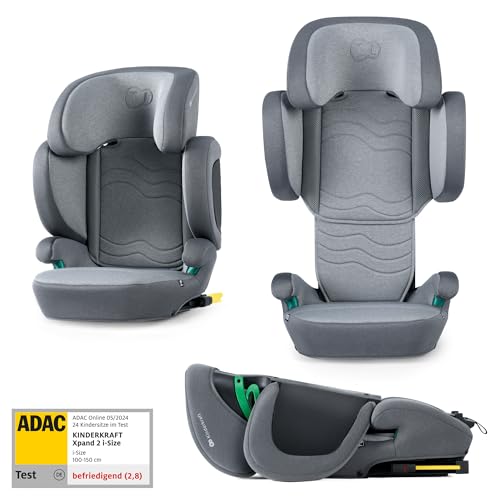The Advanced Guide To Pram And Pushchair
Prams and Pushchairs: A Comprehensive Guide for New Parents
Navigating parenthood involves a wide range of decisions, one of the most substantial being the choice of an ideal pram or pushchair. These necessary items work as a sanctuary for infants and a method of transportation for caretakers. Whether strolling through the park or running errands, a great pram or pushchair can boost the experience for both parent and kid. This short article offers a thorough appearance at the types of prams and pushchairs available, their functions, and essential factors to consider to make before acquiring one.
Understanding Prams and Pushchairs
While the terms “pram” and “pushchair” are typically used interchangeably, they refer to slightly various items. Understanding the difference can help in making an educated choice.
Term
Description
Pram
Generally created for babies, prams have a fully flat structure, enabling the baby to lie down comfortably. They typically come with a carrycot and appropriate for newborns approximately about 6 months old.
Pushchair
Created for older babies and young children, pushchairs often have a more upright seating position. They are flexible and can typically be reclined or adapted to accommodate the child's growth, beginning with around six months and encompassing preschool age.
Kinds of Prams and Pushchairs
When picking a pram or pushchair, various styles will cater to numerous parenting requirements and lifestyles. Here are the main types offered on the marketplace:
Traditional Prams
- Classic, classic designs with a sturdy carrycot.
- Suitable for newborns.
- Normally bulkier, ideal for leisurely strolls.
Pushchairs
- Light-weight and typically foldable, perfect for travel and fast outings.
- Can be front-facing or rear-facing.
- Consist of functions like adjustable handlebars and reclining seats.
Travel Systems
- A mix of a vehicle seat and a pushchair.
- Practical for car-to-pushchair transitions without disrupting the baby.
- Typically more costly but worth considering for their multifunctionality.
Multi-Functional Strollers
- Deal various configurations, permitting a carrycot, sit-up seat, or safety seat accessory.
- Versatile based on the kid's development and altering requirements.
- Can often be used for numerous children with accessories.
Lightweight Strollers
- Ultra-portable, ideal for parents on the go.
- Easy to fold and bring.
- Generally suggested for older babies or young children.
Secret Features to Consider
When choosing the best pram or pushchair, a couple of critical functions must be taken into consideration:
Safety Features
- Try to find a five-point harness system to protect the child.
- Designs with braking systems that are easy to run with the foot deal included safety.
Weight and Size
- Consider just how much weight the caretaker can manage, and the storage area readily available.
- A light-weight design might provide easier maneuverability, while a bulkier design might offer much better stability and toughness.
Resilience and Material
- A frame made from top quality products makes sure durability.
- Weather-resistant fabrics can provide convenience and ease of cleansing.
Alleviate of Folding
- Models that can be folded quickly and easily are normally favored, specifically for moms and dads who need to utilize public transportation or have actually limited storage space.
Handling and Comfort
- Adjustable manages can accommodate different heights, making sure a comfortable push for all caretakers.
- Great suspension is necessary for smoother rides on unequal surfaces.
Preparing for the Purchase
Before making a purchase, it's advisable to carry out extensive research. The following steps will assist new parents make an informed decision:
Define Your Needs
- Consider way of life aspects such as travel frequency, urban vs. suburban living, and storage area.
Budgeting
- Prams and pushchairs differ significantly in price. Set a reasonable budget plan, bearing in mind safety and quality.
Test Drive
- Whenever possible, check the pram or pushchair. Focus on weight, maneuverability, and overall convenience.
Parent and Baby Reviews
- Search for feedback from other moms and dads who have used the product. This can provide insights into real-world efficiency.
Examine for Warranty
- An excellent service warranty can safeguard your financial investment and ensure durability.
FAQs
Q1: At what age can a baby use a pushchair?Typically, babies can
_begin utilizing a pushchair around six months when they can hold their direct separately. Prior to that, a pram or carrycot is suggested. Q2: Are travel systems worth the investment?Yes, travel systems can offer fantastic value for parents who need a smooth transition in between the
_vehicle and stroller. They supply convenience and versatility, particularly for households who regularly travel. Q3: How long can you use a pushchair?Most pushchairs can be utilized up until a child is around 3 to 4 years old, though some designs use features for larger children. Q4: Do I require a brand-new pram or pushchair for each child?If your existing design is in great condition and fulfills safety requirements, there might be no need for a brand-new one. However, think about elements like wear and tear, hygiene, and progressing requirements. Selecting the right pram or pushchair is a crucial decision for any new moms and dad. With a variety of designs, types, and features readily available, moms and dads can discover a design that matches their requirements, lifestyle, and budget.__
By looking into and comprehending the distinctions between prams and pushchairs, parents can make a confident and informed choice that will provide the most safe, most hassle-free experience for their child. As Best Prams UK embark on this exciting journey of being a parent, having the best transport alternative can really improve the experience of raising a kid. 